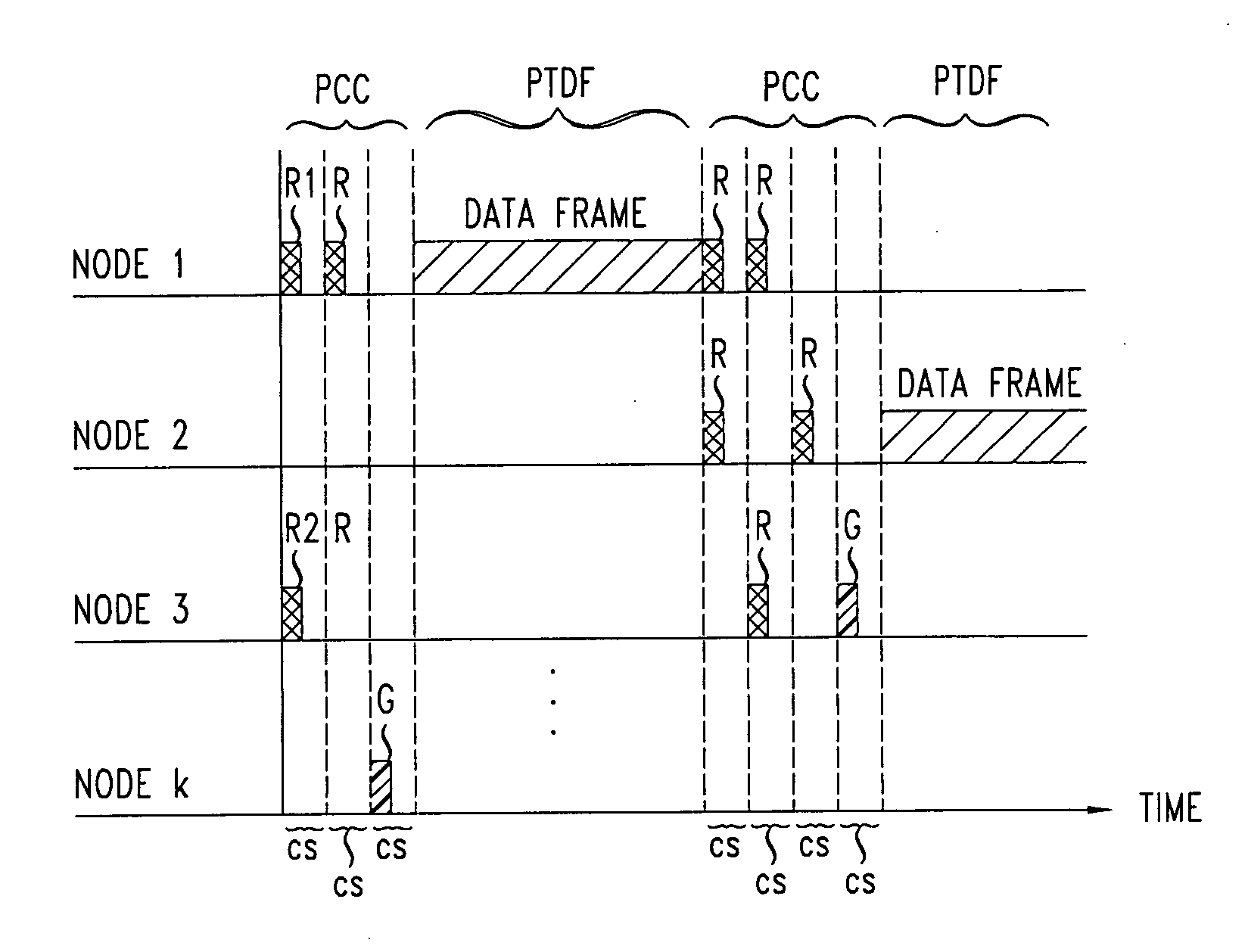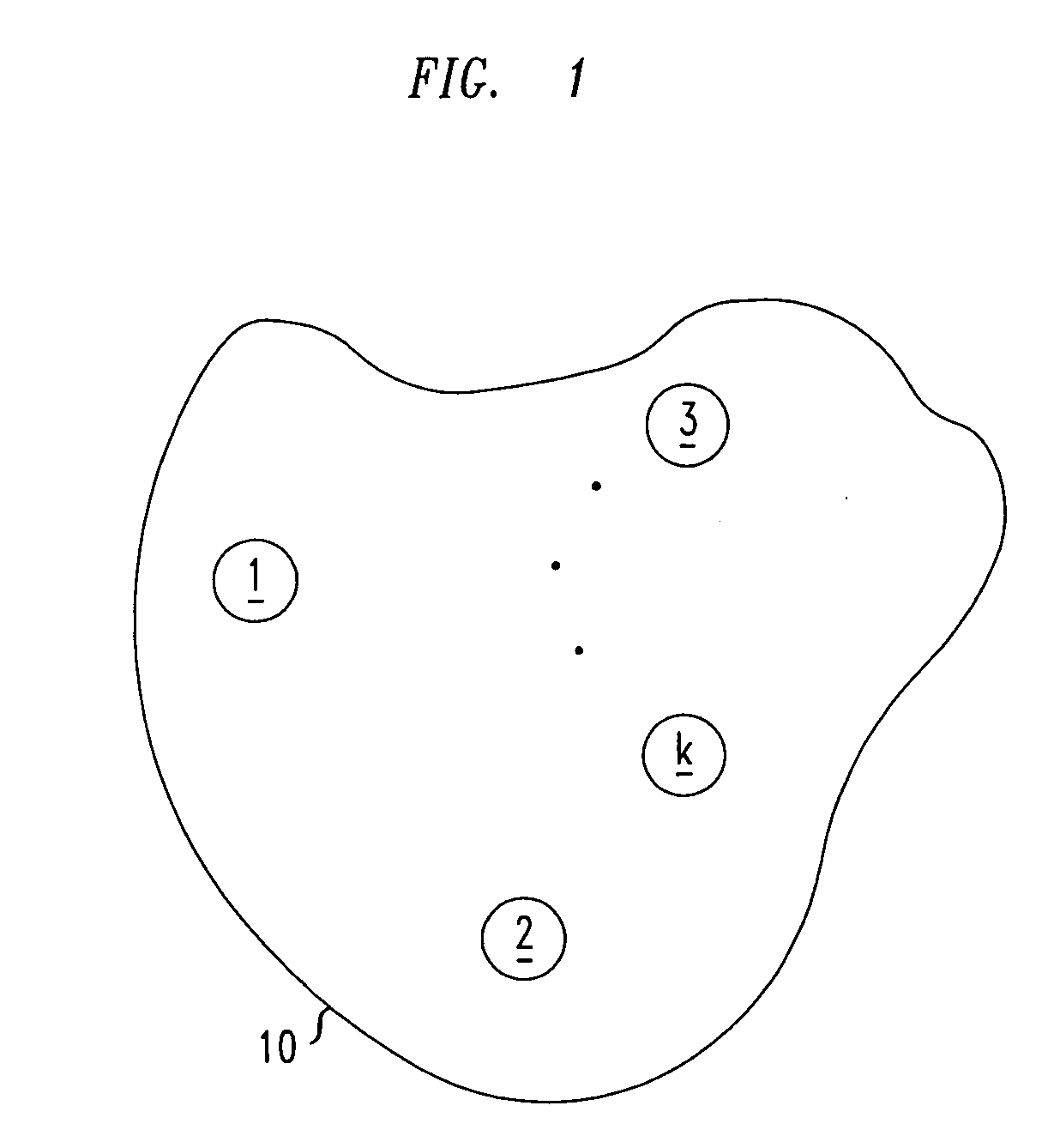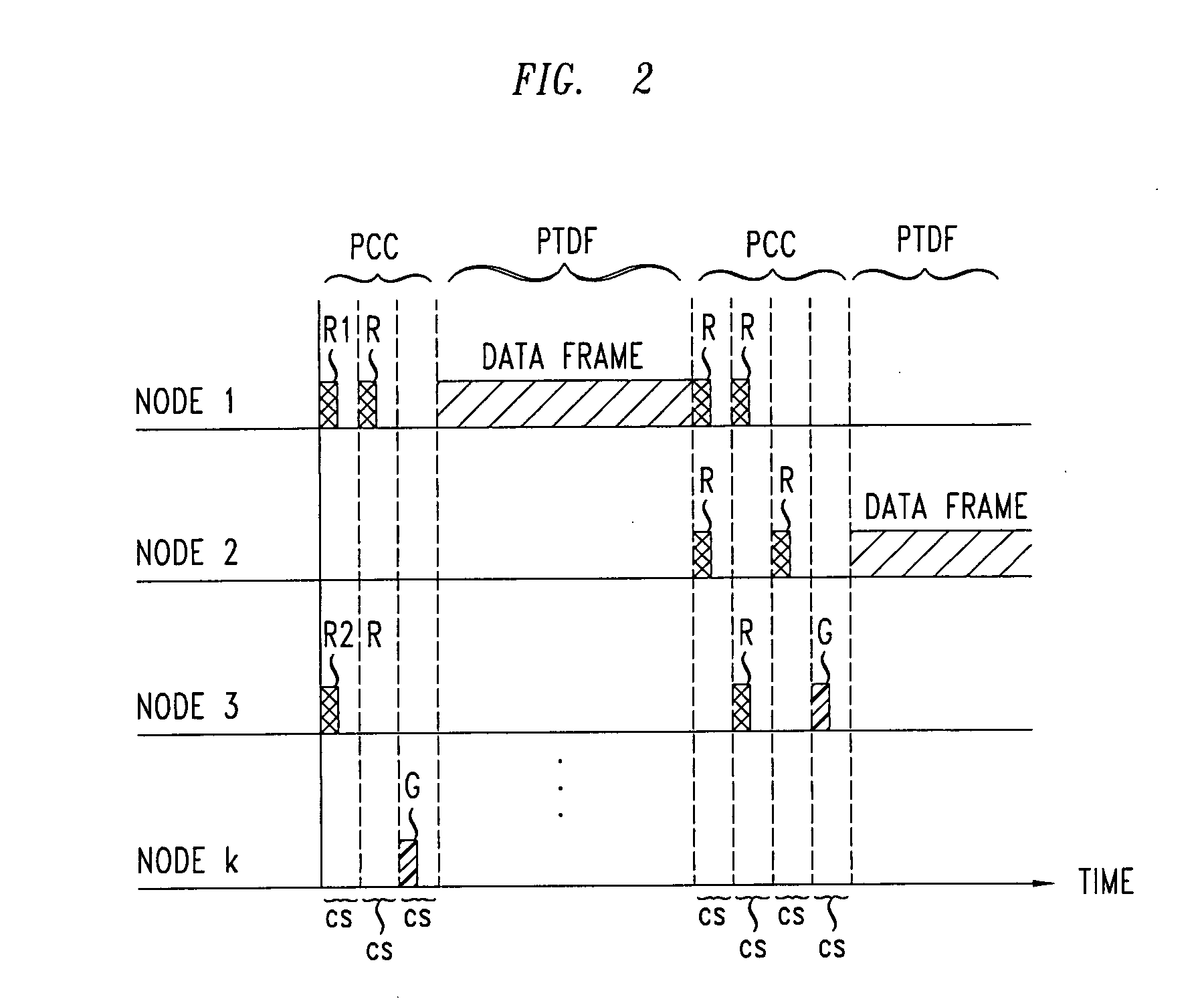Distributed scheduling in wireless networks with service differentiation
a wireless network and service differentiation technology, applied in the direction of data switching by path configuration, wireless commuication services, electrical appliances, etc., can solve the problems of loss, loss, and inability to determine the complete content of either transmission, and achieve effective reduction of communications bandwidth in wireless channels
- Summary
- Abstract
- Description
- Claims
- Application Information
AI Technical Summary
Benefits of technology
Problems solved by technology
Method used
Image
Examples
Embodiment Construction
[0025]FIG. 1 shows an exemplary a local contention neighborhood 10 of a wireless data network (WDN), e.g., a WLAN, an ad hoc wireless network, or a wireless sensor network. The local contention neighborhood includes a plurality of nodes 1, 2, 3, . . . k. In a local contention neighborhood, each node 1 . . . k is able to transmit data frames to one or more nodes 1 . . . k therein and is able to receive data frames from one or more of the nodes 1 . . . k therein. Furthermore, the nodes 1 . . . k are also able to transmit requests for reservations of a shared communication channel to one or more of the nodes 1 . . . k of the neighborhood, and the one or more nodes 1 . . . k are able to transmit grants of said requests. The grants may be transmitted by nodes 1 . . . k that are targets of transmissions of data frames or by a designated node in the local contention neighborhood 10.
[0026] The local contention neighborhood 10 operates by a distributed scheduling scheme in which nodes 1 . ....
PUM
 Login to View More
Login to View More Abstract
Description
Claims
Application Information
 Login to View More
Login to View More - R&D
- Intellectual Property
- Life Sciences
- Materials
- Tech Scout
- Unparalleled Data Quality
- Higher Quality Content
- 60% Fewer Hallucinations
Browse by: Latest US Patents, China's latest patents, Technical Efficacy Thesaurus, Application Domain, Technology Topic, Popular Technical Reports.
© 2025 PatSnap. All rights reserved.Legal|Privacy policy|Modern Slavery Act Transparency Statement|Sitemap|About US| Contact US: help@patsnap.com



